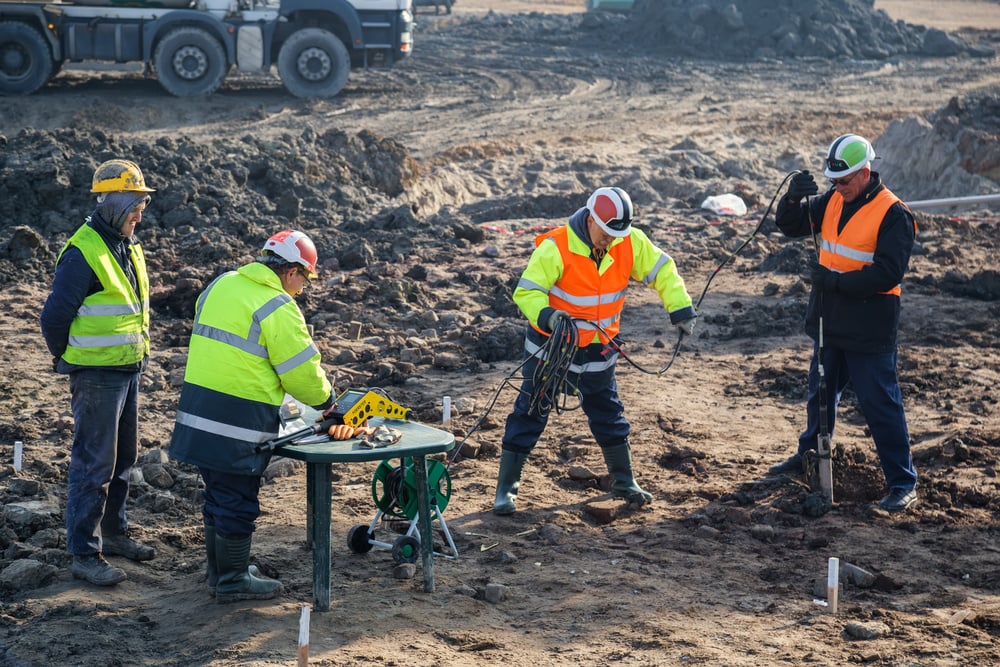Not known Details About Specialized Geotechnical Engineering Solutions
Table of ContentsSpecialized Geotechnical Engineering Solutions Can Be Fun For EveryoneSpecialized Geotechnical Engineering Solutions for BeginnersThe Main Principles Of Specialized Geotechnical Engineering Solutions The smart Trick of Specialized Geotechnical Engineering Solutions That Nobody is DiscussingHow Specialized Geotechnical Engineering Solutions can Save You Time, Stress, and Money.A Biased View of Specialized Geotechnical Engineering Solutions
William Rankine, an engineer and physicist, established an alternate to Coulomb's planet pressure concept. Albert Atterberg established the clay uniformity indices that are still utilized today for dirt classification. In 1885, Osborne Reynolds identified that shearing causes volumetric extension of dense products and tightening of loose granular materials. Modern geotechnical design is said to have actually begun in 1925 with the publication of Erdbaumechanik by Karl von Terzaghi, a mechanical designer and rock hound. Terzaghi additionally established the structure for theories of bearing ability of foundations, and the theory for forecast of the rate of settlement of clay layers because of consolidation. Later on, Maurice Biot fully developed the three-dimensional dirt loan consolidation concept, prolonging the one-dimensional version formerly created by Terzaghi to much more general hypotheses and presenting the collection of standard formulas of Poroelasticity.
Geotechnical engineers explore and identify the buildings of subsurface conditions and products.
The Main Principles Of Specialized Geotechnical Engineering Solutions
Still, they are often utilized to allow a geologist or designer to be lowered right into the borehole for straight visual and hand-operated exam of the soil and rock stratigraphy. Various soil samplers exist to meet the demands of various design jobs. The basic infiltration test, which utilizes a thick-walled split spoon sampler, is the most common means to collect disrupted examples.

Typically, the interface's specific geometry is unidentified, and a streamlined interface geometry is assumed. Finite inclines call for three-dimensional designs to be evaluated, so most inclines are analyzed thinking that they are considerably vast and can be represented by two-dimensional designs.
Little Known Questions About Specialized Geotechnical Engineering Solutions.
Measurement of quantities and evaluation of actual conditions. It is improper for projects whose style can not be altered during construction.
Principles of Geotechnical Design. Soil Technicians and Structures. Disrupted soil buildings and geotechnical style, Schofield, Andrew N., Thomas Telford, 2006.
The 15-Second Trick For Specialized Geotechnical Engineering Solutions
and Kovacs, W. (1981 ), An Intro to Geotechnical Design, Prentice-Hall, Inc. Deep Scan Technology (2023 ): Deep Check Tech uncovers concealed frameworks at the website of Denmark's highest building. "Geofrost Coring". GEOFROST. Obtained 20 November 2020. Han, Jie (2015 ). Concepts and Practice of Ground Enhancement. Wiley. ISBN 9781118421307. RAJU, V. R.
Ground Enhancement Technologies and Case Histories. Singapore: Study Publishing Solutions. p. 809. ISBN 978-981-08-3124-0. Ground Enhancement Principles And Applications In Asia. Pariseau, William G. (2011 ). Design evaluation in rock mechanics. CRC Press. Hegde, A.M. and Palsule P.S. (2020 ), Performance of Geosynthetics Reinforced Subgrade Subjected to Repetitive Automobile Plenties: Experimental and Numerical Researches.
Cengage Discovering, Stamford, 666 p. Atkinson, J., 2007. The mechanics of soils and foundations. Taylor & Francis, N.Y., 442 p. Drifting Offshore Wind Wind Turbines: Reactions in a Sea state Pareto Optimal Styles and Economic Analysis, P. Sclavounos et al., October 2007. Nicholson, D, Tse, C and Dime, C. (1999 ). The Observational Method in ground design concepts and applications.
Some Known Facts About Specialized Geotechnical Engineering Solutions.
These reports are customized to satisfy the details requirements of a task and include layout specifications and advice for the building and construction of find out this here a range of man-made structures. Along with providing working as a consultant services covering areas such as slope security and load-bearing abilities for different materials, these engineers take on research study and advancement tasks to improve view publisher site methodologies, equipment, materials knowledge and analysis covering whole lifecycles (Specialized Geotechnical Engineering Solutions).
Engineering the properties and auto mechanics of rocks consisting of the application of characteristics, liquid mechanics, kinematics and material mechanics. This combines geology, soil and rock mechanics, and structural design for the design and building of foundations for a series of civil design jobs. This area includes anticipating the performance of foundation soil and rock to a load imposed by a framework, while taking into consideration efficiency, economy and security.
Nevertheless, prices of pay generally boost as your expertise and abilities expand, with standards indicating a graduate starting salary of between 18,000 and 28,000 per year in the UK. This increases to 26,000 to 36,000 with a couple of years of experience and after that getting to 40,000 to 60,000+ for senior, legal or check my source master engineers.
The Greatest Guide To Specialized Geotechnical Engineering Solutions
With the ideal application it is possible to master the occupation and gain access to a challenging yet satisfying and important career. A rock hound would certainly need to retrain to come to be a geotechnical designer, although there is lots of cross-over between both careers, which can make this easier. Geologists need to have an understanding of soils, rocks and other products from a scientific viewpoint, while geotechnical engineers tale their expertise of issues such as dirt and rock technician, geophysics and hydrology and use them to engineering and ecological projects.
When beginning, these engineers will tend to work with less intricate projects, developing understanding and experience all set for even more tough job later on. Geotechnical engineers often tend to specialise in specific areas as they grow in experience, concentrating on certain facilities such as railways, roads or water. These engineers also function with renewable energy, offshore and onshore oil and gas, nuclear power, and a lot more.